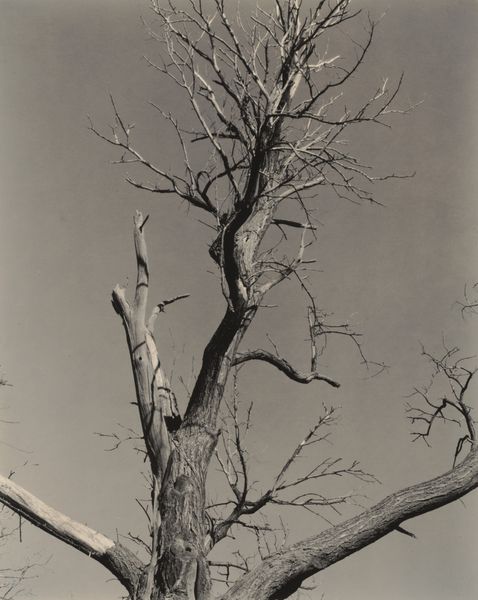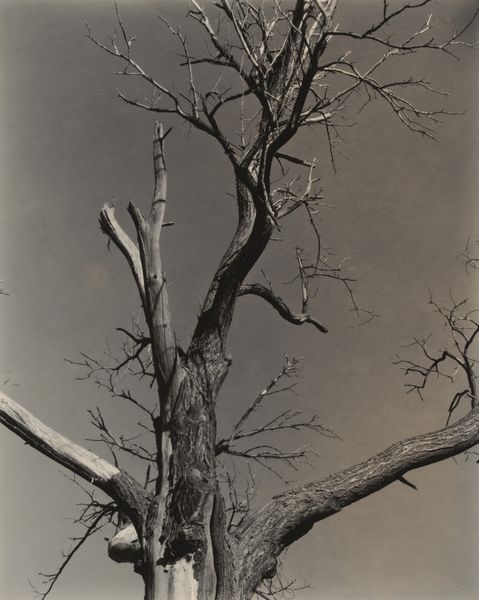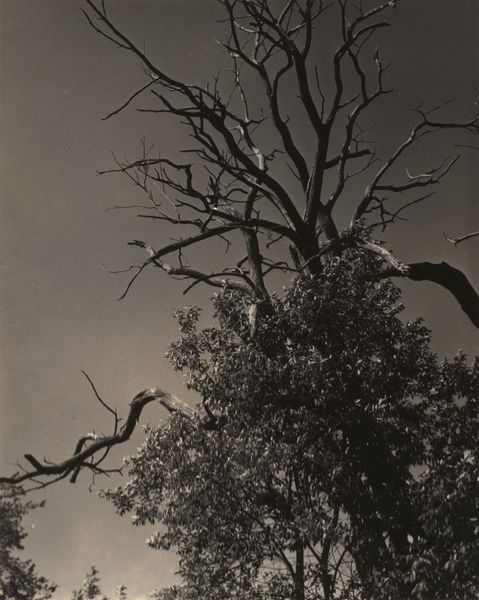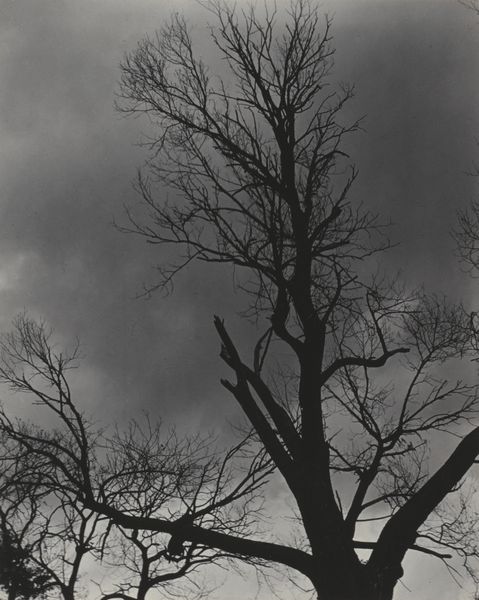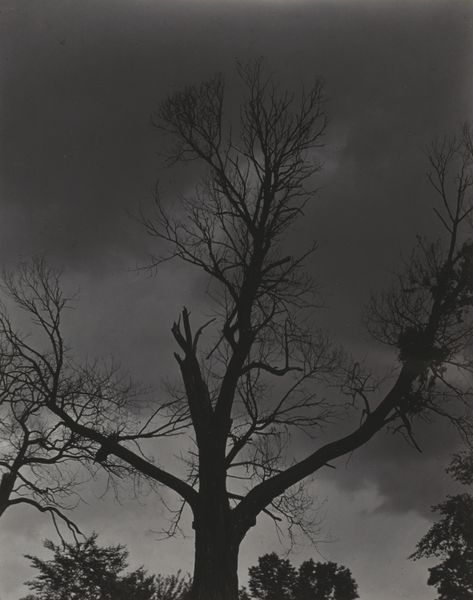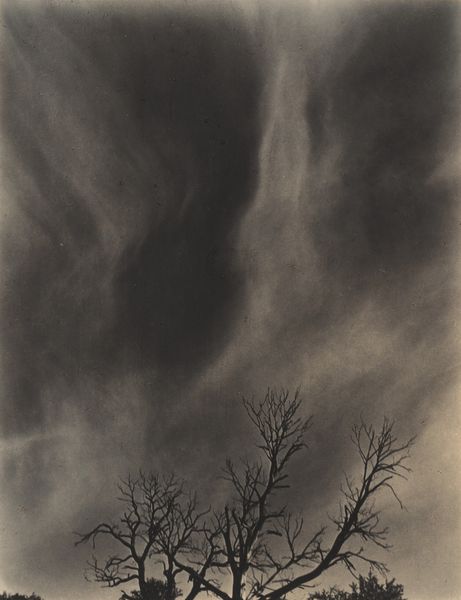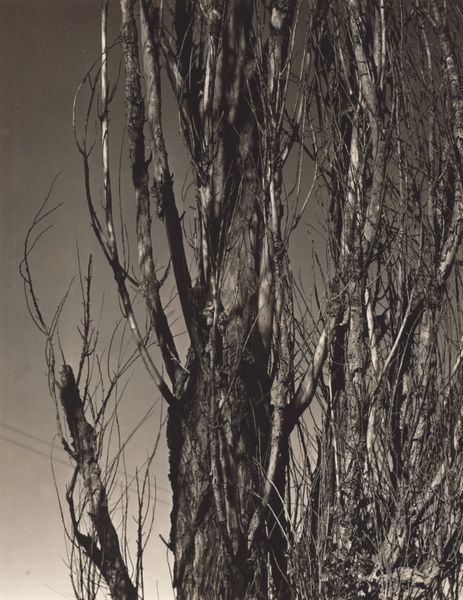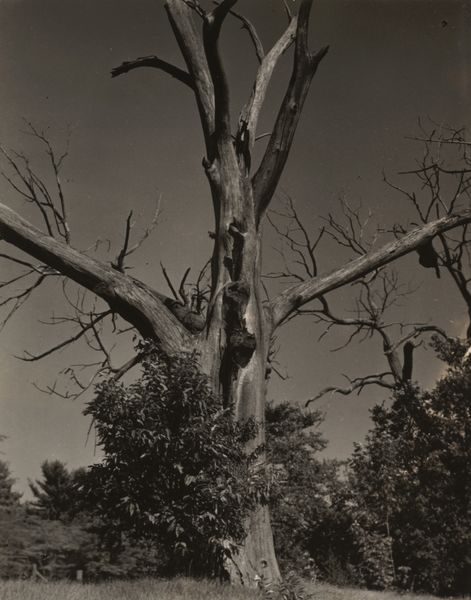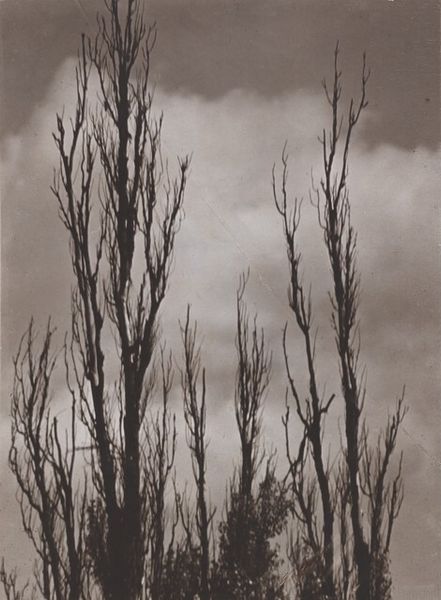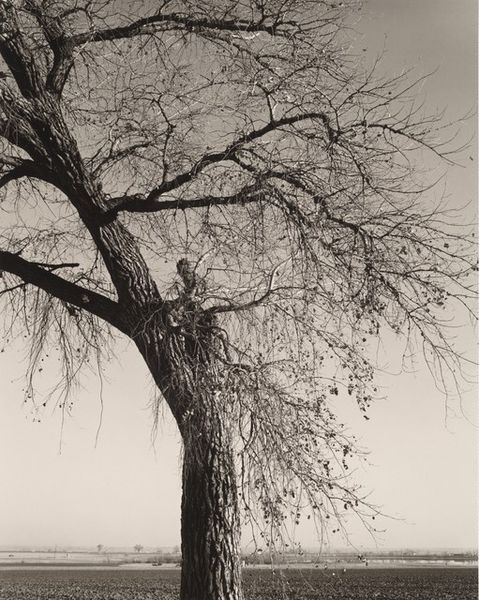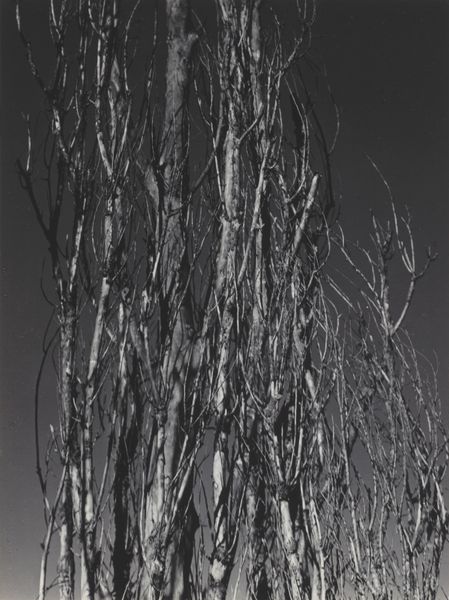
Dimensions: sheet (trimmed to image): 23.4 x 15 cm (9 3/16 x 5 7/8 in.) mount: 37 x 27.3 cm (14 9/16 x 10 3/4 in.)
Copyright: National Gallery of Art: CC0 1.0
Curator: Welcome, everyone. Here we have Alfred Stieglitz's gelatin-silver print, "The Dying Chestnut Tree or Life and Death," created in 1927. Editor: Well, the title certainly prepares you. It's stark, isn’t it? A very direct, almost skeletal composition. Curator: Stieglitz created this striking image during a pivotal time. As a key figure in promoting modernism in America, he advocated for photography as fine art, exploring themes like urbanization and the natural world's transformation. Editor: I am immediately drawn to how the branches reach. There is almost a geometric angularity. They appear frozen mid-gesture, cut from life and laid out on stark gray. Curator: And that’s interesting, because this photograph emerged from a larger series by Stieglitz that looked to natural subjects to comment on the human condition. The fading vitality of the tree mirroring perhaps societal anxieties or his own aging. Editor: Symbolism, then, clearly intended. You see, the contrasting textures of the smooth sky versus the rough, almost brutally rendered bark—they convey this sense of depletion, of something fundamentally changed. Is it not a bit on the nose? Curator: Perhaps. Yet this era valued honesty and a direct portrayal of life. Beyond a formal aesthetic exercise, it also offered the chance for Stieglitz, through his extensive exhibition and gallery work, to comment more broadly on the rapid transformation of American society during this time period. Editor: Regardless of the socio-historical angle, the composition is incredibly well done. Notice the central placement, but how your eye is then drawn to these sharp offshoots of the dead branches against the background. Its impact lies not just in subject matter, but technical decisions, I believe. Curator: Precisely. The dialogue between subject and photographic technique mirrors the complex dialogue between progress and loss that Americans experienced throughout the early 20th century. Thank you. Editor: A thought-provoking image indeed; a skeletal framework upon which to contemplate mortality.
Comments
No comments
Be the first to comment and join the conversation on the ultimate creative platform.
